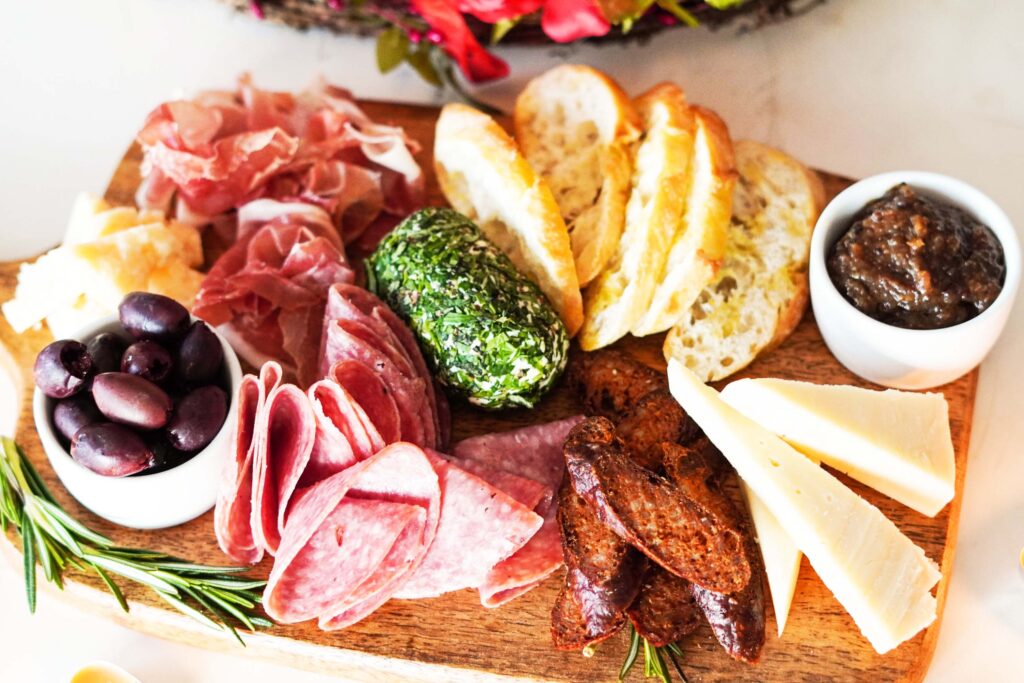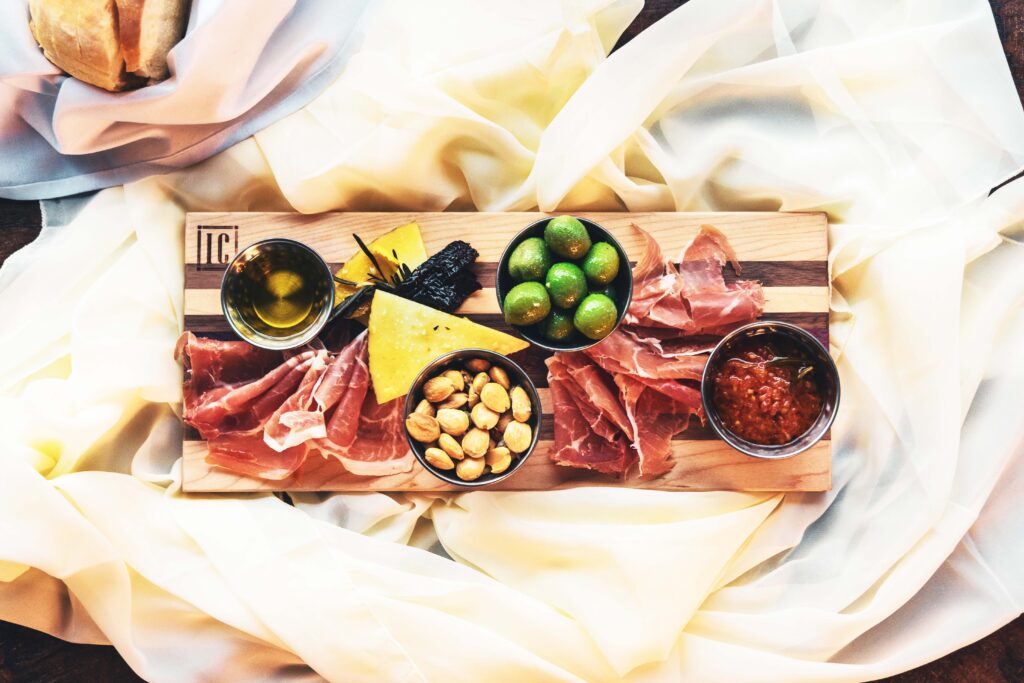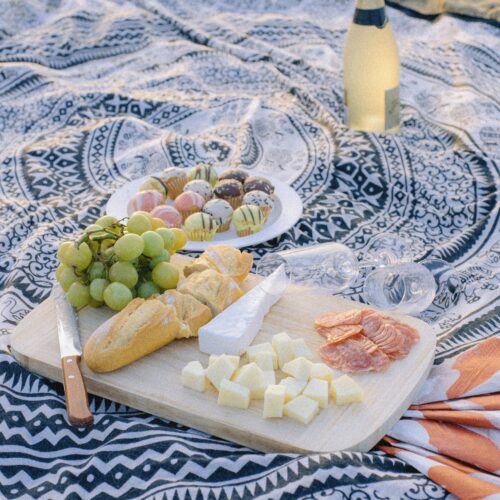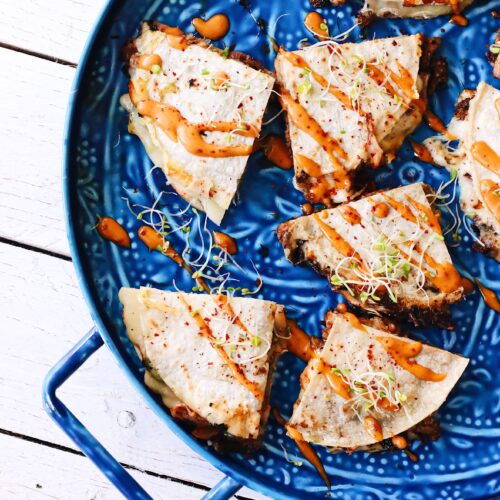Unleash Your Inner Cheese Connoisseur and Build the Ultimate Charcuterie Board Today
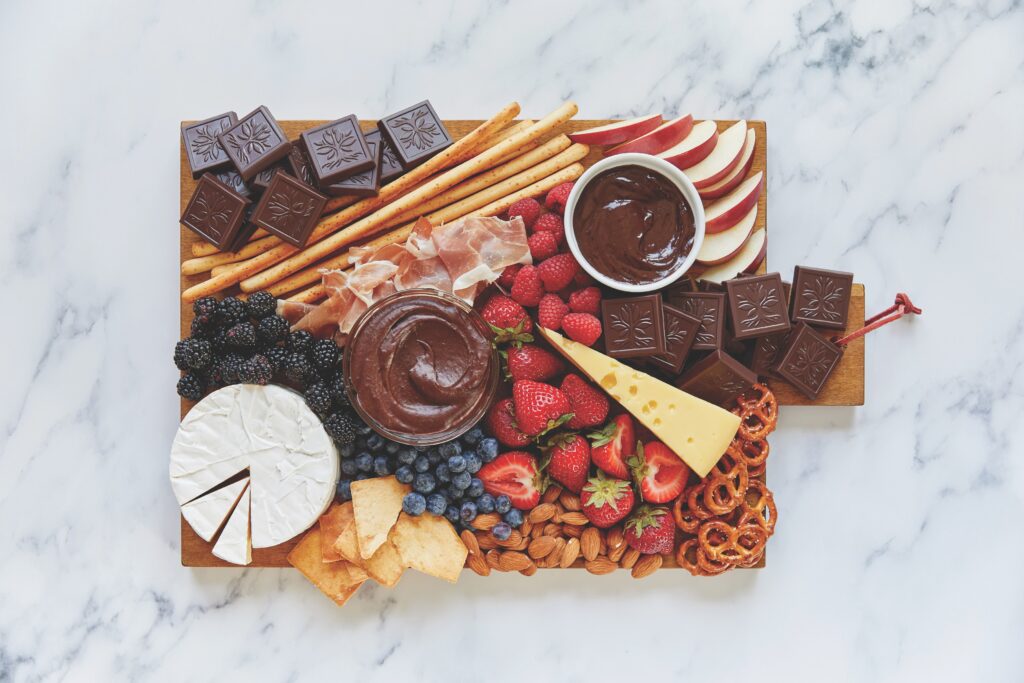
by Stefanie Michaels
Charcuterie you ask? Well, I can’t cook. No, really. I can barely fry an egg. Why my dilemma you ask? Because when most kids are in the kitchen after school or on weekends, learning cooking basics then full fledged recipes, I was in dance class and or rehearsals for performances.
I’ve gotten by mostly by luck and pre-made items, even exploring ideas from cooking classes online, but for some reason, following directions is not my beat, and I leave something out, cook it too long, or burn it.
As my hubs says, “I didn’t marry you for cooking, I married you because you like to order in!” Ur, um… thanks, I think?
So, imagine my delight when I learned about a charcuterie option! The word is French for “deli” and I’ve learned to get all fancy with the foodie items that goes on top of the board. I know, I know, it’s big for me to look all chef-ish, but I promise you people are absolutely shocked when I bring it out on display.
TIP: The popularity of this style of entertaining has brought consumers various boards to display your food items on, some with knife drawers, while other’s are more simplistic. Either way, you can’t go wring with any option!
What is a charcuterie board?
Typically items sit on a board. It looks like the kind that pizzerias use to pull the pizza from the oven. On it, boasts a a variety of cured meats such as prosciutto or salami, as well as cheeses such as brie or cheddars. Add on crackers, sliced breads, nuts, dried fruits, pickles, jams, and honey.
The charcuterie board can be personalised and customised to the anyone’s taste and preference. I’ve even seen them done with vegitarion options, gluten-free and dairy-free. Even, a dessert version with chocolates, mini-pies and cupcakes.
The good news is that anything pulled together on a charcuterie board looks spectacular!
Here is a list of food items that are commonly found on a charcuterie board:
- Cured meats: Think deli slices of prosciutto, salami, pepperoni, and chorizo. Also, Turkey slices or veggie slices.
- Cheeses: Brie, cheddar, gouda, blue cheese, and goat cheese work, or add in dairy free options and mark those with a pretty doily to differentiate from the dairy choices.
- In between, place crackers, bread, or crostini. Gluten-free ops are good here, just earmark them to let guests know it’s an alternative.
- Nuts such as almonds, walnuts, and pistachios. Careful with these items, as some people can be allergic. I like to keep these on a separate board just in case.
- Dried fruits such as apricots, cranberries, and figs, but also sliced apples, pears and orange slices look beautiful and give additional options.
- Pickled vegetables such as olives, pickles, and coronations. I use Italian olives from the deli department.
- Jams and spreads such as fig jam and honey mustard pair well with everything.
- Honey or other sweet condiments such as syrups are great, but also offer a sugar free alternative for those who can’t eat sugars. I use sugar-free maple syrup.
TIP: Order a honey dipper spoons for honey and small knife spreaders and spoons for the mustards, jams and spreads.
A little history:
Charcuterie is a French term that refers to cooked and cured meats, and the tradition of serving them on a board for entertaining dates back centuries.
The practice of charcuterie can be traced back to ancient Rome, where cured and dried meats were a staple food for soldiers and travelers.
The art of charcuterie was later refined in France during the medieval period, where cured meats, cheeses, bread, and wine were served on wooden boards to guests.
This tradition has evolved over time and today, charcuterie boards can include a variety of items such as meats, cheeses, fruits, nuts, crackers, spreads, and condiments, and they are often used as a snack or appetizer in social gatherings and parties.
